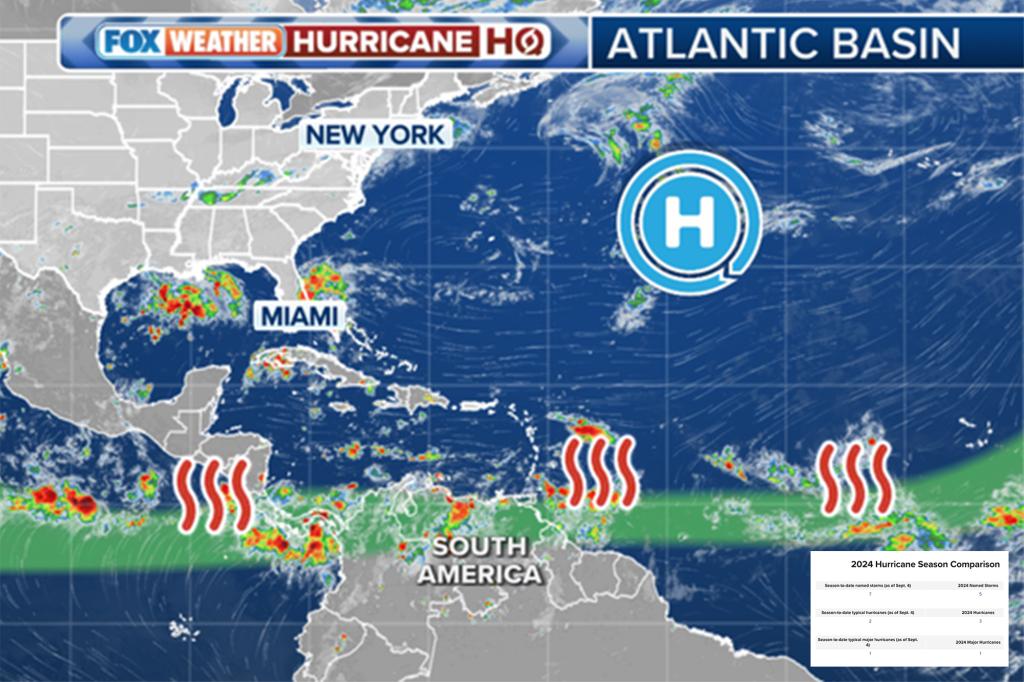Hurricane researchers at Colorado State University are managing expectations for the current hurricane season, indicating that activity in the basin is expected to be at normal or below-normal levels through at least September 16. The chance of above-normal activity is just 10% due to record inactivity in the basin. The period from August 12 through September 3 was the quietest in 56 years, falling behind key metrics for an average season. Despite having five named storms, three hurricanes, and one major hurricane so far, the basin is unlikely to reach the activity levels of a typical year.
Several factors have contributed to the reduced tropical activity in the Atlantic basin, including the position of the monsoon trough over Africa, cooling waters in the eastern Atlantic, warm temperatures in the upper atmosphere, and dry air in the eastern edge of the basin. Computer models have failed to predict these deviations from the norm, negating favorable conditions such as reduced wind shear and warm sea surface temperatures. It remains uncertain whether these favorable conditions will return for the remainder of the season or if the season is effectively over.
There is hope that the basin could still reach normal levels of activity, with projections of up to 14 named storms, seven hurricanes, and three major hurricanes. However, the odds of significantly above-average activity are slim. The impact of a normal season can be just as severe as a busier-than-average season, as evidenced by previous seasons like 2022 and 2023. While there is still a possibility for increased activity, it is important to be prepared for any potential outcomes in the upcoming weeks.
Global tropical activity is on the decline, not just in the Atlantic basin but also in basins across the Indian and Pacific Oceans. Researchers have observed significant decreasing trends in global hurricane numbers and Accumulated Cyclone Energy (ACE), especially in the western North Pacific. While cyclones that do form are becoming costlier and more prone to rapid intensification, the overall reduction in activity is a notable trend in recent years.
It remains to be seen whether the reduced tropical cyclone activity globally is a sign of less impactful years to come or if it is an anomaly. The Atlantic hurricane season, along with the eastern and central Pacific seasons, runs through November 30, while other basins like the western Pacific can experience activity year-round. Despite the current record inactivity, it is important to monitor conditions for any potential changes that could result in increased tropical activity in the coming weeks.
Dr. Phil Klotzbach and his team at Colorado State University are not giving up on the current hurricane season yet, despite the low activity levels. While the lack of tropical storms has been notable, there are still possibilities for increased activity, particularly with upcoming weather systems in the Caribbean and off the coast of Africa. Conditions for intensification of these systems look favorable, indicating that the season may not be over just yet. It is crucial to remain vigilant and prepared for any developments in the tropics in the weeks ahead.


